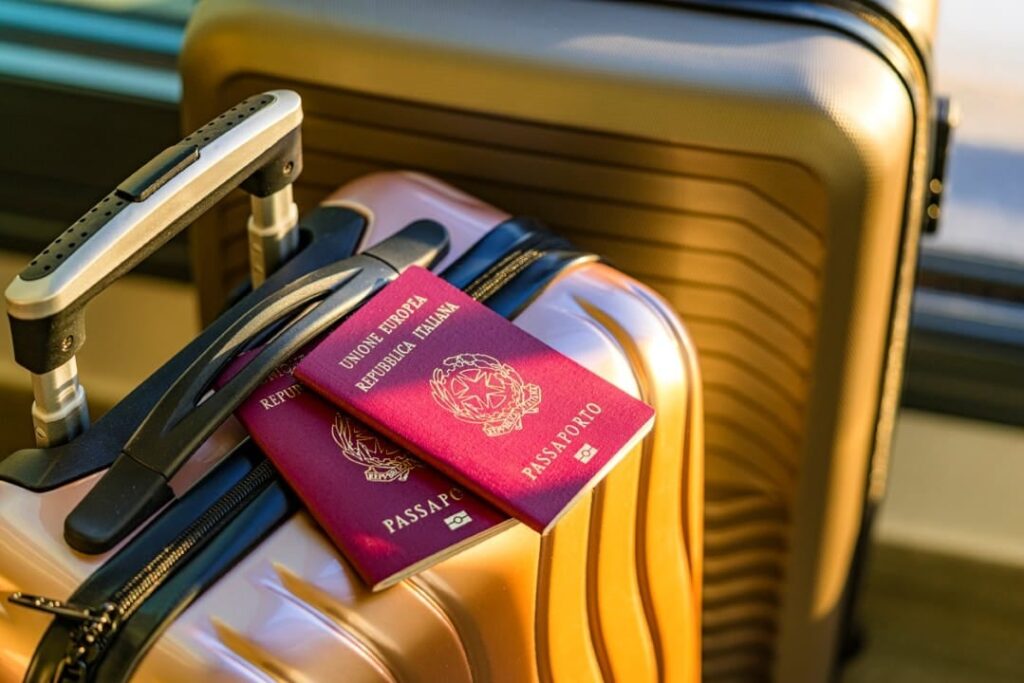
Starting October 12, 2025, the 29 Schengen Area countries, such as Portugal, France, and Italy, will stop stamping passports of foreign tourists, adopting the Entry/Exit System (EES), an electronic mechanism that uses biometric data, such as fingerprints and facial recognition, to record entries and exits. The change, to be fully implemented by April 9, 2026, aims to streamline border control, enhance security, and combat irregular immigration. The measure affects travelers from visa-exempt countries, like Brazil, visiting the bloc for stays of up to 90 days within a 180-day period. The United Kingdom, outside the Schengen Area, will not participate in the system. The EES will also serve as the foundation for the ETIAS, an electronic authorization set to take effect by late 2026.
The transition marks the end of a traditional practice, with passport stamps, cherished by collectors, being replaced by digital records. The European Commission highlights that the system will reduce airport queues and increase efficiency. However, refusal to provide biometric data will result in entry denial.
The Entry/Exit System (EES) represents a technological evolution in European border control. From October 12, travelers will be registered in a unified database storing names, passport numbers, fingerprints, and facial photos. The goal is to create an accurate digital record of entries and exits, facilitating the identification of overstays—people exceeding the permitted stay duration. According to the European Commission, the system will also help prevent document fraud and protect EU citizens from threats like terrorism.
The implementation will be gradual, with countries having until April 2026 to fully adopt the EES. During this period, some airports may still stamp passports, depending on local infrastructure. The measure covers travelers from visa-exempt countries, such as Brazil, the United States, and Australia.
Passport stamps, for many travelers, are more than bureaucratic records: they are tangible memories of global adventures. The shift to the EES, while practical, eliminates this nostalgic practice. Collectors lament the change, which turns the passport into a purely functional document. During the transition, some travelers may still receive stamps at certain entry points, but the trend is toward a fully digital process by 2026.
The change also raises privacy concerns. Storing biometric data in a centralized system worries activists, who fear misuse of personal information. The European Commission, however, assures that data will be protected by strict security protocols.
The EES is part of a broader modernization of European borders. It will serve as the foundation for the European Travel Information and Authorization System (ETIAS), which will require pre-authorization for visa-exempt travelers starting late 2026. The ETIAS, costing 7 euros (about $7.80), will be valid for three years or until the passport expires. Applications will be submitted online, with approval typically within 96 hours.
For Brazilians, the ETIAS will add an extra step to travel planning. Those under 18 or over 70 will be exempt from the fee, but all will need authorization. The system will cross-check applicant data with international databases to identify potential risks before travel.
Adopting the EES will require significant adjustments at airports, ports, and train stations. Self-service machines will be installed to collect biometric data, reducing the need for interaction with immigration officers. In some cases, travelers may pre-register information via apps, but in-person validation will remain mandatory.
Transport companies, such as airlines, have expressed concerns about potential delays during the initial implementation phase. The European Commission promises awareness campaigns to guide travelers and minimize disruptions. Countries like Portugal and Spain, popular destinations for Brazilians, have already begun preparations to integrate the EES at their main airports.
The EES will be adopted by 29 countries, including all Schengen Area members except Ireland and Cyprus, which will maintain manual controls. Iceland, Norway, Switzerland, and Liechtenstein, non-EU Schengen members, will also implement the system. The United Kingdom, outside the bloc, will continue its own immigration procedures.
Foreign residents in the EU and holders of Vatican-issued passports are exempt from biometric registration. Children under 12 are also initially exempt from providing biometric data, though this rule may change in the future. The list of affected countries includes popular tourist destinations, making the change relevant to millions of travelers.
On this Sunday, August 24, 2025, the new moon shines with only 1% visibility, marking…
Neste domingo, 24 de agosto de 2025, a lua nova brilha com apenas 1% de…
The astrological influences for August 24, 2025, bring a vibrant and nuanced scenario for the…
As influências astrológicas do dia 24 de agosto de 2025 trazem um cenário vibrante e…
Na noite de sábado, 23 de agosto de 2025, a Caixa Econômica Federal realizou o…
Famílias grandes ou que planejam viagens longas precisam de carros espaçosos, confortáveis e com boa…